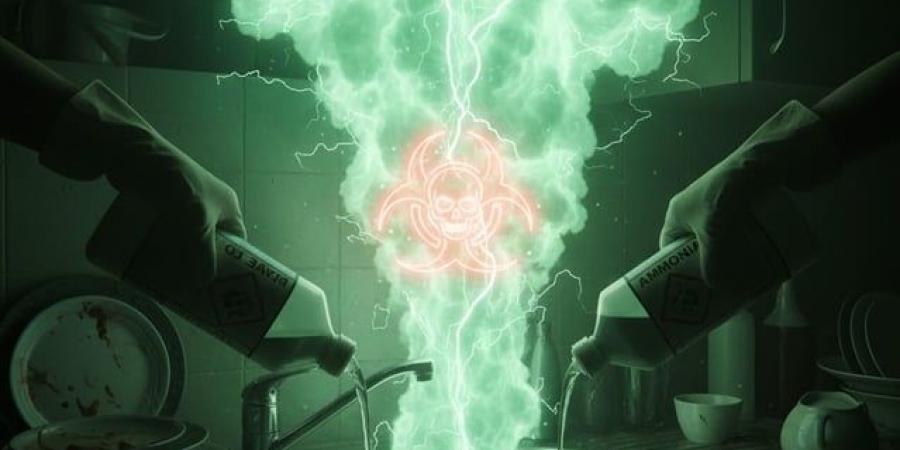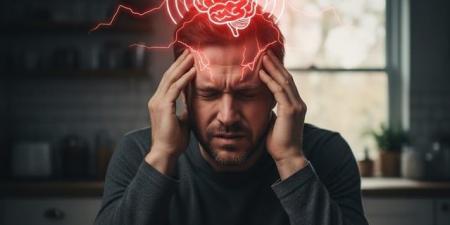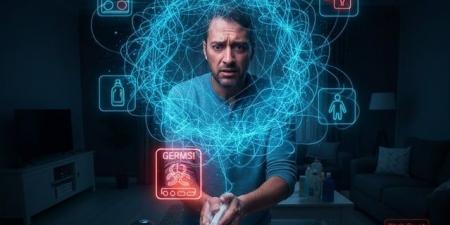نعرض لكم زوارنا أهم وأحدث الأخبار فى المقال الاتي:
Cleaning Materials That Should Not Be Mixed With Each Other - المصدر 24, اليوم الأحد 16 نوفمبر 2025 10:55 صباحاً
المصدر 24 - Most people assume that mixing cleaning products makes them stronger or more effective. In reality, combining certain chemicals can be extremely dangerous, releasing toxic fumes or causing reactions that damage surfaces — or even harm your health.
You don’t need to be a chemist to clean your home safely.
But you do need to know which common household cleaners should never be used together. Some combinations can irritate your lungs, burn your skin, damage your eyes, corrode surfaces, or create gases that are life-threatening in enclosed rooms like bathrooms or kitchens.
This guide explains the most dangerous cleaning-material combinations, why they"re harmful, and what safe alternatives you should use instead.
1. Bleach + Ammonia = Extremely Toxic Chloramine Gas
One of the most dangerous combinations of household cleaners is bleach and ammonia.
Individually, both are strong cleaners — but together, they react instantly and release chloramine gas, which is highly toxic.
What happens when they mix:
Chloramine gas forms within seconds
It irritates eyes and lungs
It can cause chest pain, nausea, and coughing
Prolonged exposure can cause pneumonia or respiratory damage
Common household sources of ammonia:
Glass cleaners
Window sprays
Floor cleaners
Some toilet cleaners
Symptoms if inhaled:
Burning throat
Shortness of breath
Tight chest
Watery eyes
Severe coughing
Always avoid:
Spraying glass cleaner after using bleach in the same area.
2. Bleach + Vinegar = Chlorine Gas (A Potentially Deadly Reaction)
Vinegar is natural.
Bleach is a powerful disinfectant.
But together?
They create chlorine gas, which was used as a chemical weapon in World War I.
Why this combination is so dangerous:
Chlorine gas causes severe lung irritation
It can lead to fluid buildup in the lungs
Even small amounts can cause coughing and breathing difficulty
High exposure can be deadly
Common mistake:
People often clean bathrooms with bleach, then use vinegar for limescale removal — not knowing the fumes mix in the air.
Never mix them directly or use one right after the other.
3. Bleach + Rubbing Alcohol = Chloroform (Yes, THAT Chloroform)
Mixing bleach with isopropyl (rubbing) alcohol produces:
Chloroform
Hydrochloric acid
Chloroform is a highly toxic compound that can cause:
Dizziness
Loss of consciousness
Nausea
Organ damage
Where this mistake happens:
Cleaning surfaces with alcohol wipes after disinfecting with bleach
Using bleach on stains followed by alcohol-based sprays
Important note:
Even small amounts of chloroform can be harmful in closed rooms.
4. Hydrogen Peroxide + Vinegar = Peracetic Acid (Strongly Corrosive)
Both hydrogen peroxide and vinegar are popular natural cleaners.
Some people mistakenly believe mixing them creates a super-cleaner — but it actually produces peracetic acid, a corrosive chemical.
Why peracetic acid is dangerous:
Irritates eyes, skin, and respiratory system
Can damage surfaces like countertops and metal
Causes chemical burns in strong concentrations
Safe alternative:
Use one of them — not both — on the same surface.
If you want to disinfect naturally, choose hydrogen peroxide alone.
5. Baking Soda + Vinegar = Harmless, But Not Useful (and Damaging in Pipes)
This mixture isn’t toxic — but it’s often misunderstood.
What actually happens:
Baking soda is a base
Vinegar is an acid
They neutralize each other
The result is mostly water and carbon dioxide, meaning:
The cleaning effect is weak
The mixture loses its power instantly
Problems when used for drains:
When used inside pipes:
The gas can build pressure
It may damage old plumbing
It rarely clears deep clogs
Better drainage methods:
Boiling water
Enzyme-based cleaners
A plumber’s snake
Baking soda and vinegar are great separately — but weak together.
6. Different Drain Cleaners (Chemical Overload)
Many drain cleaners contain extremely strong chemicals:
Sodium hydroxide
Sulfuric acid
Hydrochloric acid
Mixing different brands or types can trigger:
Explosions
Acid spills
Heat reactions
Toxic fumes
Common dangerous scenario:
A drain doesn’t unclog the first time, so someone adds a different cleaner — causing a violent reaction in the pipe.
Safe rule:
Use one drain cleaner only.
If it doesn’t work, call a plumber.
7. Bleach + Toilet Bowl Cleaners = Toxic Gas Clouds
Many toilet cleaners contain acids.
When they mix with bleach (even residual bleach), they produce:
Chlorine gas
Toxic vapors
Symptoms of exposure:
Burning nose
Difficulty breathing
Chest tightness
Headache
Eye irritation
Never pour multiple cleaners into the toilet at once.












0 تعليق